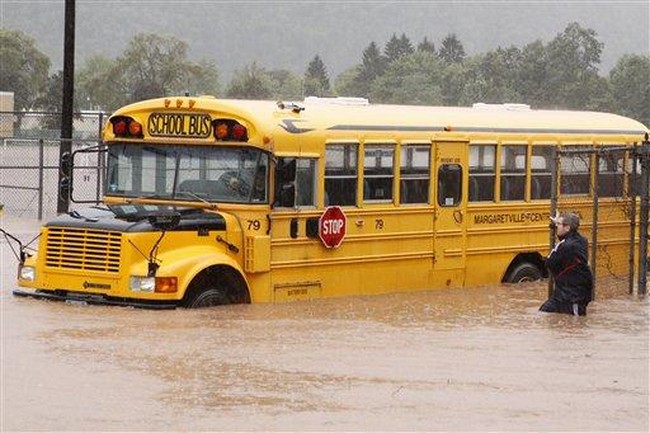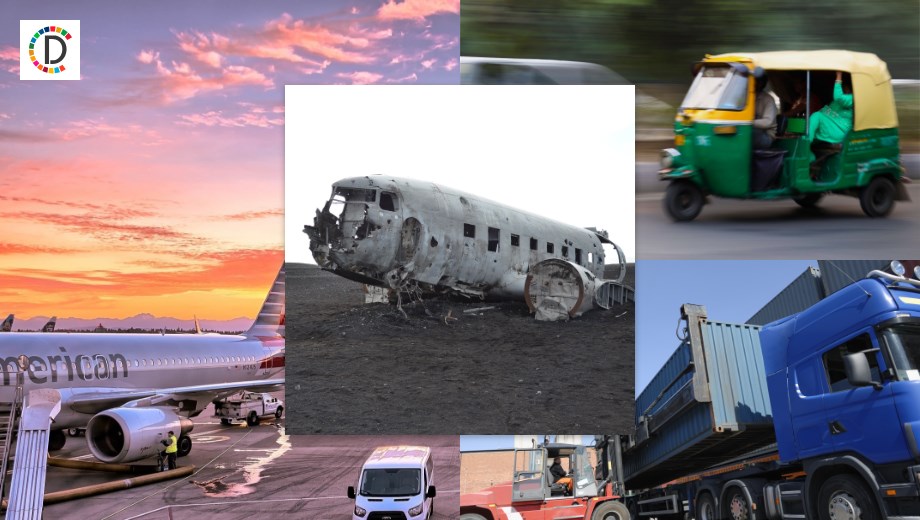Vermont's Groundbreaking Climate Bill Targets Oil Giants
In an unprecedented move, Vermont has enacted a law mandating fossil fuel companies to compensate for climate-related damages. This legislation's ripple effects could extend far beyond the state's borders.
Published June 02, 2024 - 00:06am

Image recovered from pjmedia.com
Vermont has positioned itself as a pioneer in environmental policy by becoming the first U.S. state to pass legislation that places financial responsibility for climate change damages onto fossil fuel companies. The law, which has sparked widespread debate and is set to have profound implications for both the industry and environmental efforts, was enacted without the signature of Vermont's Republican Governor Phil Scott, signaling a contentious bipartisan issue.
The Vermont Climate Change Cost Recovery bill, known formally as S.259, mandates an assessment of damages spanning from January 1995 to December 2024 due to greenhouse gas emissions. This assessment aims to quantify the impact on various sectors including public health, agriculture, and infrastructure. The designated use of collected funds is for climate adaptation measures, such as upgrading stormwater systems and retrofitting buildings for energy efficiency. This approach mirrors the federal Superfund program originally aimed at addressing hazardous material cleanup.
While environmental advocates such as the Vermont Public Interest Research Group champion the bill as a just retribution from those most responsible for climate disruption, opponents claim it is a form of scapegoating and could potentially breach constitutional rights. The bill's detractors also worry about the legal precedent it may set and the additional costs burdened on the citizens of Vermont in the event of an unsuccessful legal challenge.
Despite the controversy, the move by Vermont has caught the attention of other states and lawmakers across the country. Similar climate-related legislative initiatives are underway in New York, Massachusetts, California, and Maryland. The underlying goal of these proposals is to hold major polluters financially liable for their contribution to the climate crisis, and to fund initiatives aiding local adaptation and resilience strategies.
The conversation around Vermont's bill raises critical questions pertaining to the role of major fossil fuel companies in global climate change, the appropriate measures for accountability, and the financial mechanisms states may leverage to address their own environmental challenges. As the starting point for a potentially historic shift in environmental accountability, Vermont's law is a test case that the whole nation will be watching closely.
The legislation in Vermont, coined the Vermont Climate Change Cost Recovery bill, is geared toward exacting an ecological toll from those industries that have benefitted from the unregulated emission of climate-affecting gases. The intricacies of the bill involve not only the direct costs associated with climate change but also extend to anticipating future damages and fortifying the state against them. A distinctive feature of the legislation is the retroactive component, which could set a challenging and perhaps controversial precedent for environmental law, hinging on the cornerstone principle that the polluter must pay.
Calculating the actual cost of damages linked to climate issues is complex, involving scientific data, economic modeling, and legal frameworks. Experts will be tasked with tracing specific environmental changes back to corporate actions, a process that may not only require robust methodologies but could also lead to protracted legal battles. Critics of S.259 emphasize the logistical difficulty of accurately attributing damages to singular entities, especially over a span of nearly three decades.
However, the message Vermont is sending with this bill stretches beyond its borders. It is not merely an isolated incident of state-level legislation but rather can be interpreted as a microcosm of the growing consciousness around environmental accountability. Vermont's bold step may encourage other states to pursue their own means of ecological redress, fostering collective action that might ripple through the nation's environmental policies.
Legal experts are keeping a close eye on the bill's progression, noting that the eventual outcomes will set legal benchmarks for future climate-related litigation. One key aspect of these deliberations will revolve around the bill's compliance with the U.S. Constitution, ensuring that companies' rights to due process are not infringed upon. Moreover, the legislation will likely reignite discussions on corporate responsibility and ethical environmental practices, potentially influencing corporate behavior on a broader scale.
In Vermont and beyond, citizens, politicians, and activists are increasingly aware of the substantial costs associated with climate inaction. By addressing climate change not only as an environmental issue but also as a financial one, the hope is to catalyze substantial action that leads to significant shifts in sustainability practices. The ultimate effectiveness of Vermont's law will depend on its legal enforceability, its economic viability, and its practical outcomes in reducing the state's greenhouse gas emissions and fortifying it against future climate volatility. The answer to whether this piece of legislation can serve as a model for others might only be revealed through its application over time.
As the implications of the Vermont Climate Change Cost Recovery bill unfold, it will likely influence public opinion and the national dialogue surrounding climate change. The balance of protecting constitutional freedoms while enforcing environmental accountability is a delicate one that will require the keenest of legal scrutiny and the broadest of public support. It is this balance that will determine the success or failure of Vermont's trailblazing effort and, by extension, the potential for similar measures across the United States.







